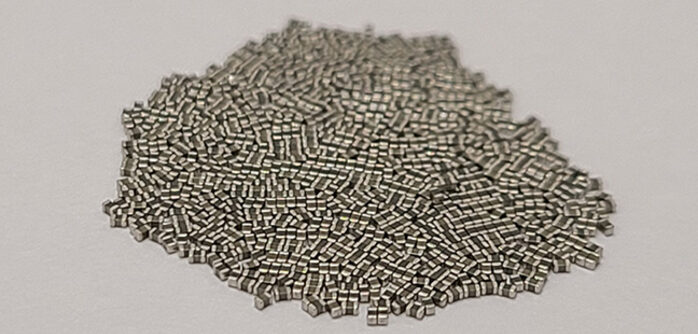Samsung Electro-Mechanics says it has developed two new types of automotive multi-layer ceramic capacitors (MLCC) for use in advanced driver-assistance systems (ADAS). The MLCC is a core component in electronic devices, controlling the stable flow of current within the circuits of electronic products. It is essential for smartphones, home appliances and automobiles.
With the ongoing development of vehicle functions, the number of high-performance semiconductors and components mounted inside a vehicle is gradually increasing. Autonomous vehicles, in particular, require reliable energy (power) supply and signal noise removal for various chips to receive signals quickly. Small, high-capacity MLCCs are required here because of the lack of mounting space due to the increasing number of components.
The two new MLCCs are the 0603 (0.6mm wide, 0.3mm long), which has a capacity of 100nF (nanofarad), and a high-capacity product in the form of the 3216 (3.2mm wide, 1.6mm long) with a capacity of 47μF (microfarad).
According to Samsung, the 0603 MLCC achieved the same 100nF (nanofarad) capacity as the 1005 product while reducing the surface area by 64% compared with the 1005 (1.0mm wide, 0.5mm long). The capacitor is mounted on the signal end of a vehicle’s electronic control unit (ECU) to eliminate surrounding signal noise and deliver signals accurately.
Furthermore, the bending strength of the MLCC is double that of a standard unit, which Samsung says helps prevent the MLCC from being damaged by shock and vibration. The company notes that the product meets AEC-Q200, the automotive electronic component reliability test standard, so it can be used not only in ADAS but also in other applications such as body, chassis and infotainment systems.
Meanwhile, the 3216 (3.2mm wide and 1.6mm long) MLCC is a 47μF product, more than double the 22μF capacity of existing capacitors, which is necessary to reliably provide power to semiconductors in a vehicle. Samsung notes that automotive semiconductors have become increasingly advanced, in order to process the enormous volumes of data generated by ADAS features. These high-performance chips require high power consumption to operate, which in turn requires high-capacity MLCCs that can store and supply a lot of energy.
The company states that durability has also been improved by increasing the rated supply voltage (the maximum voltage that can be supplied without causing damage) by 1.5 times (4V → 6.3V) compared with the existing product while maintaining an ultra-high capacity of 47μF.
“The demand for compact, high-capacity and highly reliable MLCCs is increasing significantly with vehicles going electric,” said Dooyoung Kim, EVP of the Component Solution Unit at Samsung Electro-Mechanics. “Samsung Electro-Mechanics will strengthen its technological competitiveness by developing and manufacturing core raw materials for MLCCs, and expand the market share in automotive MLCCs by internalizing facilities and increasing production capacity.”


